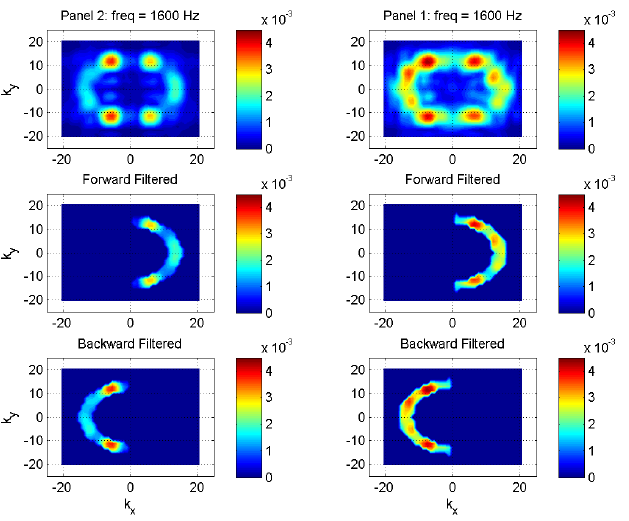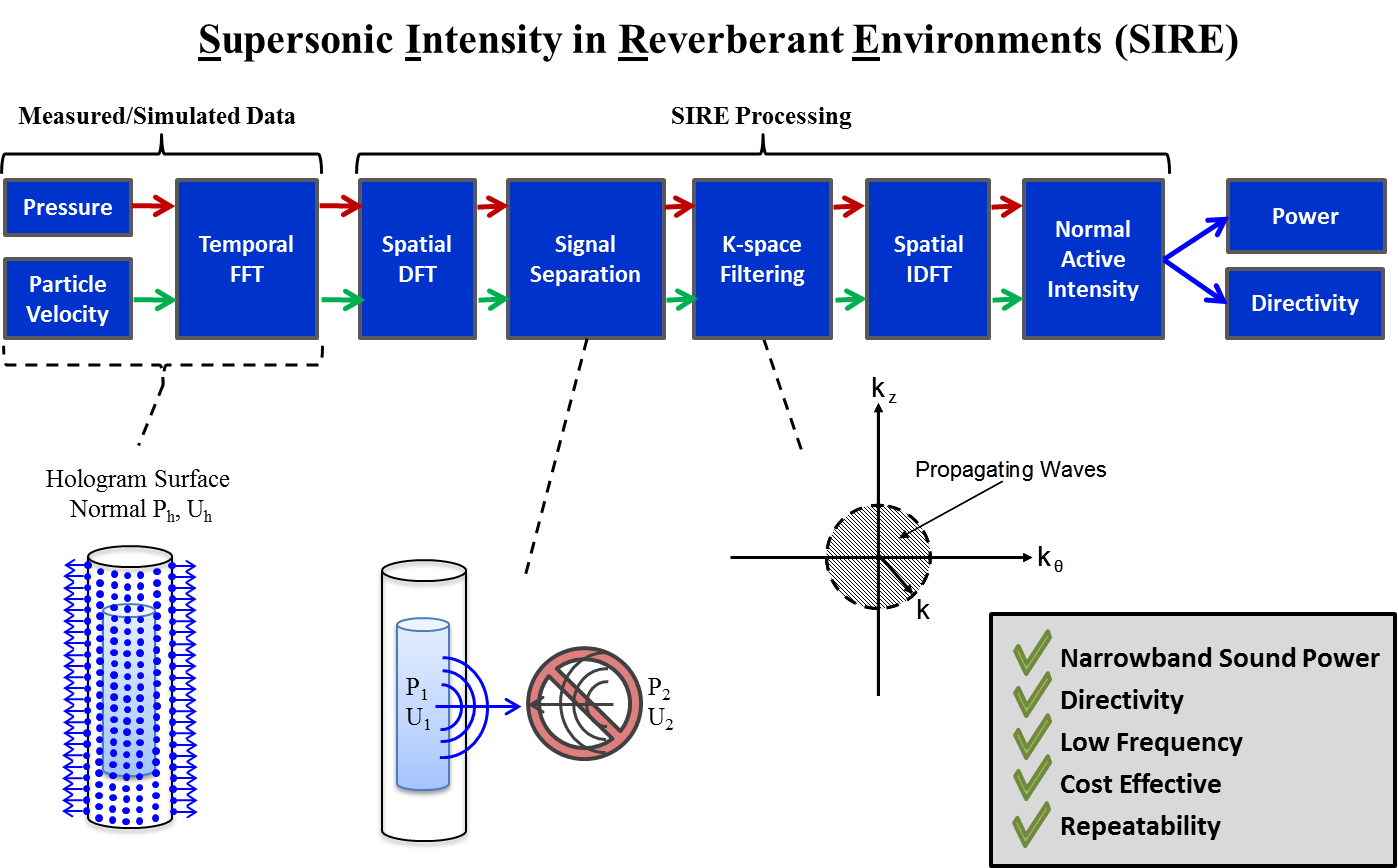Wavenumber Processing
Working with dynamic signals in the wavenumber domain can provide many advantages. Propagating and evanescent waves can be easily separated, and the direction of travel of waves (acoustic, flexural vibration, etc…) can be determined. One recent project involved determining the vibration transmission coefficient between two honeycomb panels. Wavenumber processing was used exclusively to determine the angle-dependent transmission loss between the panels. Below is an example of wavenumber processing, showing the amplitude of waves traveling in different directions.
SIRE
I am very interested in signal processing techniques, particularly in microphone or acoustic intensity array-based methods. My doctoral research culminated in a new technique called SIRE, or Supersonic Intensity in Reverberant Environments. The SIRE method uses wavenumber transforms of acoustic intensity data to separate the incoming and outgoing wavefronts of an arbitrary acoustic field. This enables a free-field-like measurement in a non-ideal environment (i.e. reflections or interfering noise sources). Below is a schematic of the SIRE processing technique.


